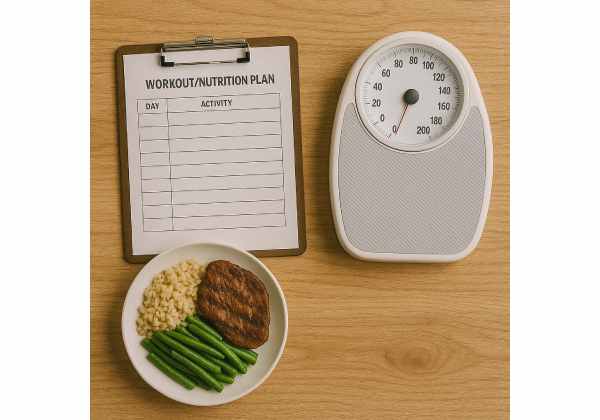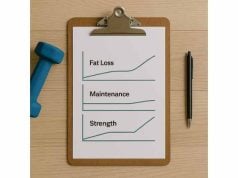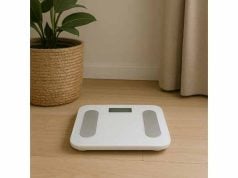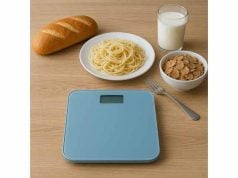
Cutting calories works—until it does not. Hunger rises, training stalls, and the scale slows. Two common tools can help without throwing your plan away: refeed days and diet breaks. Both add calories, but they work differently and serve different jobs. This guide shows exactly when to use each, how to set carbs, protein and fats, and how to judge results using trend data instead of single weigh-ins. If you are unsure whether you are facing a real stall or normal week-to-week noise, start with our brief plateau troubleshooting guide before changing your plan.
Table of Contents
- Refeeds and diet breaks explained
- When to use a refeed day
- How to run a refeed day
- When to use a diet break
- How to run a diet break
- Troubleshooting stalls and water weight
- Decision tree and examples
- FAQ
Refeeds and diet breaks explained
Refeed days are short, planned increases in calories—usually 1–2 days—that primarily raise carbohydrates while keeping protein high and fats controlled. The intent is to refill muscle glycogen, improve training quality, and give you a psychological breather without losing the overall weekly deficit.
Diet breaks are longer periods—typically 7–14 days—eating at true maintenance. They aim to restore training performance, sleep quality, and daily movement (NEAT), and to reduce diet fatigue so you can resume a deficit with better adherence.
Key differences at a glance:
- Length: 1–2 days vs. 7–14 days
- Calories: small bump near maintenance for refeed days; maintenance (not surplus) for diet breaks
- Macronutrients: refeed = carb-focused increase; diet break = balanced maintenance macros
- Primary wins: refeed = better workouts and satiety for a day or two; diet break = recovered energy, steadier mood, improved NEAT
What they do not do: neither is a magic reset for metabolism overnight. Their power is practical—better training, fewer binges, stronger adherence, and the ability to keep moving forward without harsher restriction.
If you want a refresher on safe fat-loss fundamentals before choosing tools, skim our plain-English primer on healthy weight loss basics so the strategy fits the big picture.
Bottom line: Refeeds are brief carb boosts to support performance and adherence; diet breaks are maintenance phases that protect recovery and consistency.
When to use a refeed day
Use a refeed day when your plan mostly works but fatigue or hunger peaks around hard sessions or weekends. Signs a refeed could help:
- You can stick to your deficit 5–6 days/week, but one day tends to unravel into unplanned overeating.
- Strength or high-intensity sessions feel flat on the second half of the week.
- Sleep is fine, but evening cravings spike after tough workouts.
- Weight trends down, yet you feel overly food-focused and white-knuckled by Friday.
Who benefits most:
- Lifters, team-sport athletes, or anyone with glycolytic training (lifting with volume, circuits, intervals).
- Dieters within the first 8–12 weeks of a cut who want a sustainable rhythm.
- People who prefer structure to “cheat meals.” Refeeds have targets; they are not free-for-alls.
Who may not need them:
- Very sedentary dieters with low training demands.
- People who respond better to even daily calories for routine and mood.
- If your issue is a true plateau (no change in weight averages or waist for 2–4 weeks) rather than willpower dips, a refeed is rarely enough; see Section 4 on diet breaks or consider targeted macro adjustments in our guide to adjust your macros.
Scheduling options that work:
- Weekly single refeed on your hardest training day.
- Two refeeds on back-to-back days every second week during higher training loads.
- Floating refeed when readiness scores or sleep are good but legs feel empty—use within a 7–10-day window.
Bottom line: Choose a refeed when adherence is shaky once in a while, training would benefit from extra carbs, and you want structure—not permission—to eat more.
How to run a refeed day
A good refeed is boring and precise. You add calories mostly as carbs, you keep protein high, and you control fats to avoid a blowout.
Set calories
- Aim for maintenance or ~10–15% above your current deficit intake (often +200–400 kcal for smaller individuals, +300–600 kcal for larger). The simplest method: eat your normal plan plus 1–3 servings of carb-rich foods at meals.
Set macros
- Protein: hold steady at 1.6–2.2 g/kg/day.
- Carbs: add +1–3 g/kg above your deficit baseline (common total range 4–6 g/kg for the day, adjusted to body size and training).
- Fat: keep low to moderate so calories do not overshoot (roughly 0.6–0.8 g/kg/day or your usual floor).
Place carbs where they work
- Split extra carbs around training (pre and post) and at dinner if evenings are tough; this steadies mood and helps sleep.
- Maintain sodium and hydration similar to other days so you can interpret the scale later.
Food examples (pick two or three)
- +1 cup cooked rice or oats at two meals
- +1–2 medium potatoes at dinner
- +1–2 pieces of fruit and an extra wrap or roll
- +1 bowl of cereal with milk or yogurt
Judge success (not by tomorrow’s weigh-in)
- Performance: better reps, pace, or perceived effort in the next 24–48 hours.
- Adherence: fewer evening cravings and no unplanned overeating.
- Trend: weight may blip up from glycogen and water; look at 7-day averages.
If you need help balancing macros at maintenance so refeed days slot in cleanly, see our practical overview of maintenance macros.
Bottom line: Keep refeeds carb-heavy, protein-steady, fat-controlled, and place the extra energy where it improves training and evenings.
When to use a diet break
Choose a diet break when your system, not just your willpower, needs a reset. Signs a 7–14 day phase at maintenance will help:
- Two weeks without progress in 7-day weight averages and waist, despite accurate tracking.
- NEAT is sliding: steps down >1,500/day from the start of the cut and hard to defend.
- Training performance has dropped for two weeks, and soreness lingers.
- Sleep is fragmented; you wake early or struggle to fall asleep.
- You feel food-preoccupied most of the day and weekend overeating is frequent.
Who benefits most:
- Dieters deeper into a cut (>8–12 weeks), especially at lower body fat or higher training volumes.
- People whose lives are busier for a few weeks (travel, launches, family events) and who want structure without a deficit.
- Anyone with stress or sleep debt; a break can stabilize mood and adherence.
What a diet break is not: a cheat fortnight. Calories return to maintenance, not surplus. You keep structure (protein at meals, step floor, training), and you practice the habits you will use after the diet.
If you are weighing whether to increase calories or hold the line, walk through our quick triage on when to raise calories to decide if a break or a small bump is right.
Bottom line: Use a diet break when fatigue, recovery, and NEAT are the problem. The aim is to restore the inputs that make the deficit work again.
How to run a diet break
Think of a diet break as maintenance rehearsal. You will eat at maintenance, keep protein high, and protect movement and sleep—then judge by trends.
1) Set maintenance calories
- A practical start: add +300–500 kcal/day to your recent deficit intake (closer to +300 if small and sedentary, +500 if larger or very active).
- Expect a temporary bump (0.5–1.5% of body weight) from glycogen and water in the first 3–5 days.
2) Set maintenance macros
- Protein: 1.6–2.2 g/kg/day (do not drop it).
- Fat: keep a floor of 0.6–1.0 g/kg/day from olive oil, nuts, seeds, avocado, dairy.
- Carbs: fill the rest, placing 20–50 g around training and at dinner if evenings are tough.
3) Keep training simple
- 2–4 strength sessions/week, 45–60 minutes, leaving 1–3 reps in reserve.
- 2–3 easy cardio sessions or walks. Your goal is to leave the gym feeling better than you walked in.
4) Defend NEAT
- 3×10-minute post-meal walks and a step floor (6.5–10k for many). Rested bodies move more—use it.
5) Improve sleep and stress
- Move caffeine earlier, create a 45–60 minute wind-down, keep the bedroom cool and dark.
- Bookend stressful days with water + 10-minute walk.
6) Judge success
- Compare two 7-day weight averages and waist after the initial water bump.
- Training quality and daily steps should rebound.
- Mood and cravings should steadier.
When you return to the deficit, you should feel less food-preoccupied with better performance. If you need help dialing in the calorie target, start with our walk-through to find maintenance calories.
Bottom line: Treat a diet break like practice living at goal. Keep structure, enjoy the extra energy, and let recovery rise.
Troubleshooting stalls and water weight
Short-term ups and downs often reflect water, glycogen, and sodium, not fat. Before changing calories, rule out noise.
Check these first
- Sodium swings: restaurant meals, cured meats, soups.
- Carb changes: a big pasta or rice day pulls water into muscles.
- Hormonal water: late-cycle retention can mask fat loss for several days.
- Sleep debt and soreness: both increase water retention.
Use better data
- Weigh daily after bathroom, before food; compare 7-day averages.
- Track waist or navel weekly.
- Note steps and longest sitting block; low NEAT can explain slow weeks.
For a plain-English explainer so the scale does not trick you, read our guide to water and glycogen and how to judge true change.
If it is a real stall
- Two matched weeks with no change in weight average and waist? Choose one lever: a refeed for adherence and training, a diet break for recovery, or a small macro shift (more dinner protein/fiber, carb timing for training).
Bottom line: Separate fluid noise from true plateaus. Then pick the smallest useful tool.
Decision tree and examples
Quick decision tree
- Are adherence and training the only weak points, and are weekly averages still trending down?
→ Use one refeed this week (maintenance calories, carb-heavy). Reassess in 7 days. - Are weight averages and waist flat for 2 weeks, steps falling, sleep worse, training down?
→ Take a 10–14 day diet break at maintenance. Keep structure. Reassess after two weekly averages. - Is the issue weekend over-eating specifically?
→ Install Saturday refeed (planned, carb-focused) + Sunday anchor breakfast and walk. If drift continues, graduate to a 7-day maintenance phase. - Close to goal and burnt out?
→ Consider 2 refeeds/week for 2–3 weeks or a short diet break before a final push.
Example A: Lifter, mid-cut
- Current: 2,000 kcal/day, legs day flat by Thursday, Friday snack attacks.
- Action: Friday refeed at ~2,400 kcal, +200–300 g carbs added around training and dinner.
- Result: Saturday workout strong, fewer cravings; 14-day average still drops.
Example B: Parent with busy job, deep fatigue
- Current: 10 weeks into cut, steps down ~2,000/day, poor sleep, training down.
- Action: 10-day diet break at ~2,350 kcal (from 1,900), protein ≥1.8 g/kg, 3×10-minute walks, bedtime routine.
- Result: Sleep steadier, steps rebound, return to 1,950–2,000 kcal deficit with better adherence.
Example C: Weekend regain loop
- Current: Weekdays perfect, weekends +2,000 kcal, weight trend flat.
- Action: Saturday refeed at maintenance, Restaurant rule of one (drink or dessert or richer sides), Sunday anchor breakfast and 90-minute movement window.
- Result: Fewer 3-day spikes, trend resumes.
Bottom line: Match the tool to the problem. Refeeds fix short adherence and performance dips; diet breaks fix recovery and consistency.
FAQ
What is the main difference between a refeed and a diet break?
A refeed is 1–2 days near maintenance with carb-focused calories to boost performance and adherence. A diet break is 7–14 days at maintenance with balanced macros to restore sleep, NEAT, and training quality before continuing the cut.
Will a refeed or diet break restart my metabolism?
Neither flips a switch. They help indirectly—by improving training output, movement, mood, and adherence. Expect short water/glycogen changes on the scale. Judge by 7-day averages, waist, and performance, not a single morning.
How often should I schedule refeed days?
Common patterns: once weekly on the hardest training day or two consecutive days every other week during heavy training blocks. If you are very sedentary or easily overeat, you may not need refeeds; keep daily calories even.
How long should a diet break last?
Most people do well with 10–14 days at maintenance. Shorter than a week often feels like a tease; longer than two weeks is fine if life demands it, but keep protein high, steps up, and training consistent to prevent drift.
Do refeeds or breaks cause fat regain?
If you stay near true maintenance and keep structure (protein, steps, training), fat regain is unlikely. A temporary scale bump from water and glycogen is normal. Use averages and waist measurements to confirm stability.
What if I overeat on a refeed day?
Do not chase it with restriction. Return to your normal deficit the next day, reinforce pre-planned meals, and place carbs around training and dinner. If overeating repeats, pause refeeds and try a short diet break to stabilize appetite.
Should women or men use different refeed strategies?
The principles are similar. Some women prefer refeeds aligned with hard training days or use diet breaks during higher-stress phases of the cycle. Monitor cravings, sleep, and training. Choose the tool that keeps structure and adherence high.
References
- Effects of Intermittent Energy Restriction Compared with Those of Continuous Energy Restriction on Body Composition and Cardiometabolic Risk Markers – A Systematic Review and Meta-Analysis of Randomized Controlled Trials in Adults 2024 (Systematic Review)
- Intermittent energy restriction attenuates the loss of fat free mass in resistance trained individuals. A randomized controlled trial 2020 (RCT)
- Intermittent energy restriction improves weight loss efficiency in obese men: the MATADOR study 2018 (RCT)
- Systematic review and meta‐analysis of protein intake to support muscle mass and function in healthy adults 2022 (Systematic Review)
- Hydration, Hyperthermia, Glycogen, and Recovery: Crucial Factors in Exercise Performance—A Systematic Review and Meta-Analysis 2023 (Systematic Review)
Disclaimer
This article provides general education about refeed days and diet breaks. It is not medical advice and does not replace individualized care. If you have medical conditions, take medications that affect appetite or glucose, or have a history of disordered eating, consult a qualified clinician or registered dietitian before changing your plan.
Share and follow
If this guide clarified when to use refeeds or breaks, share it with a friend who is mid-cut. For practical templates and checklists, follow us on the social network you use most—Facebook, X (formerly Twitter), or another platform you prefer.










